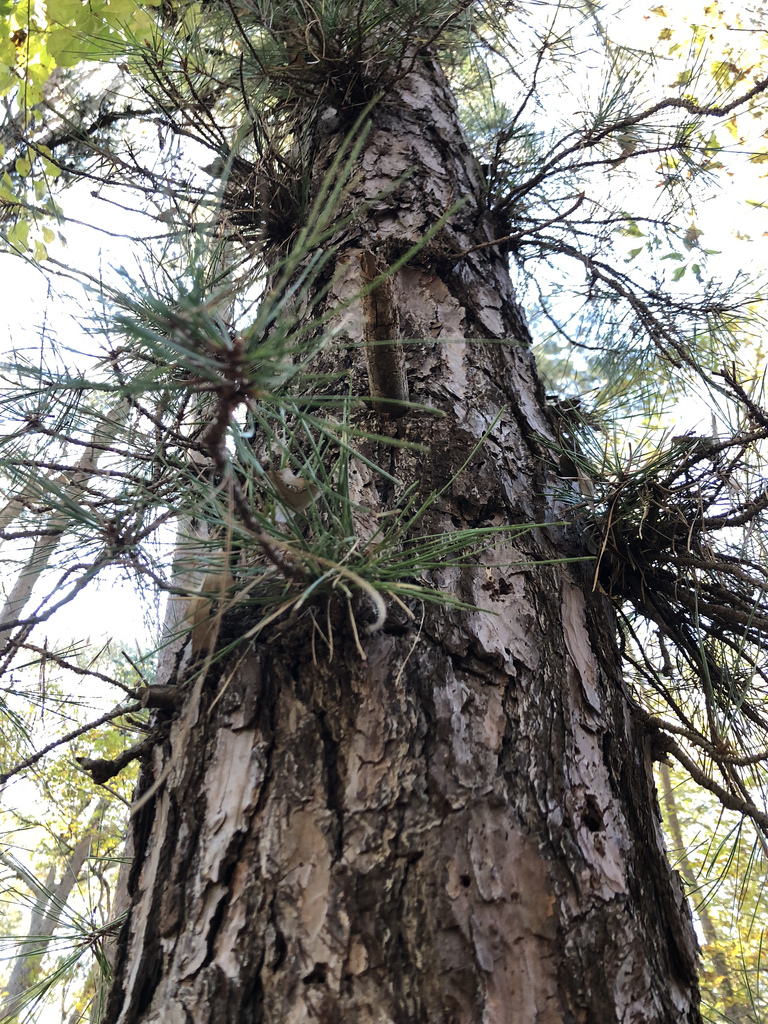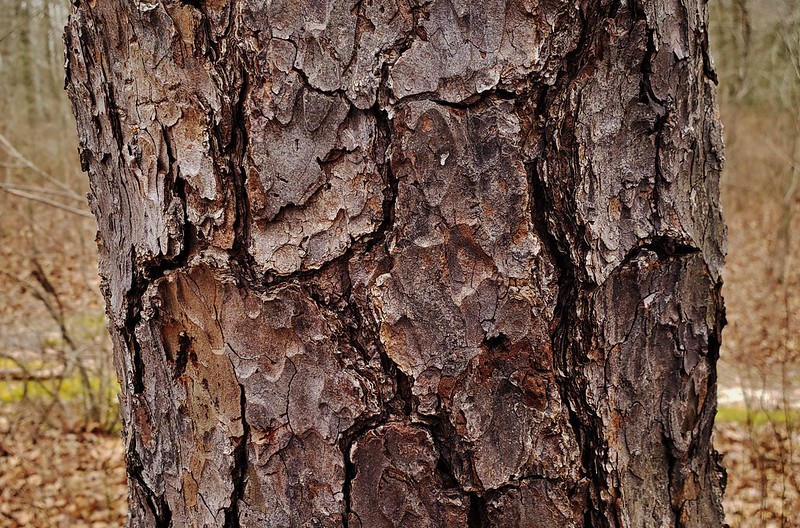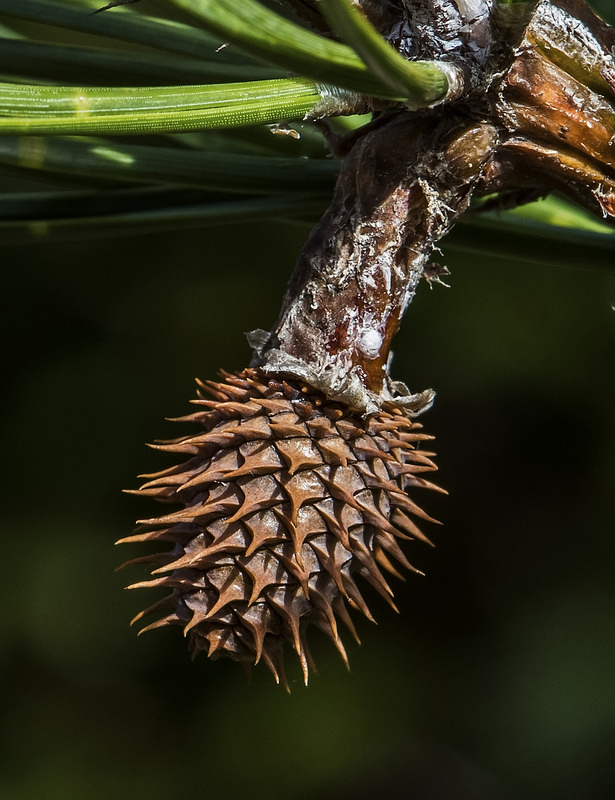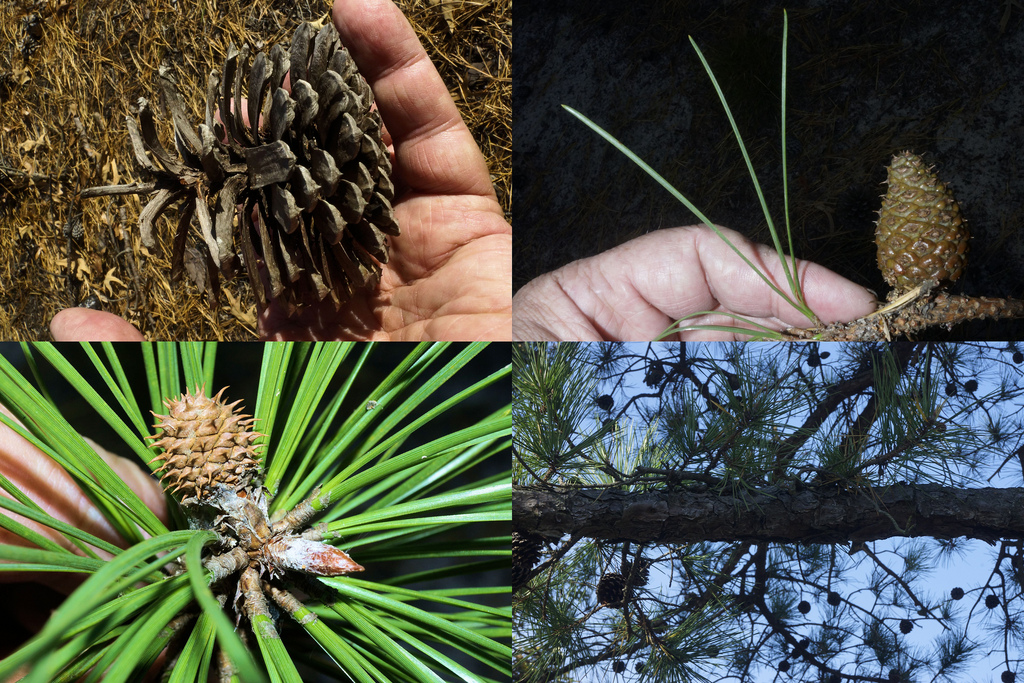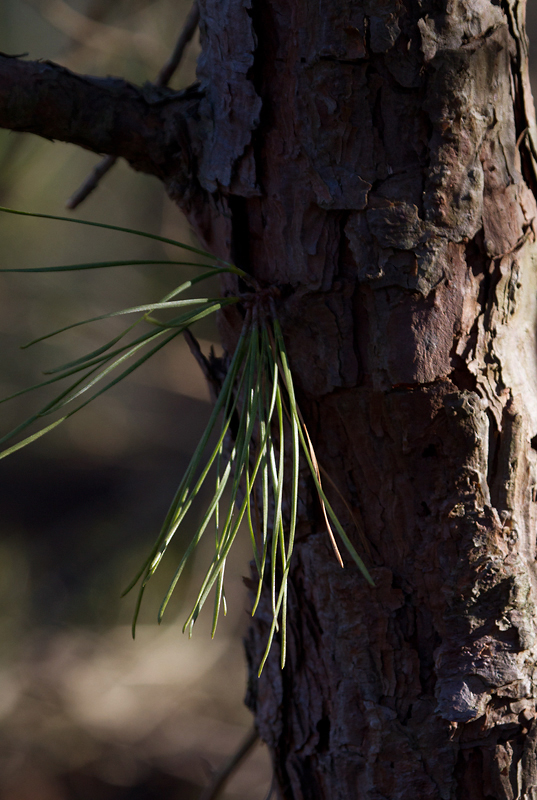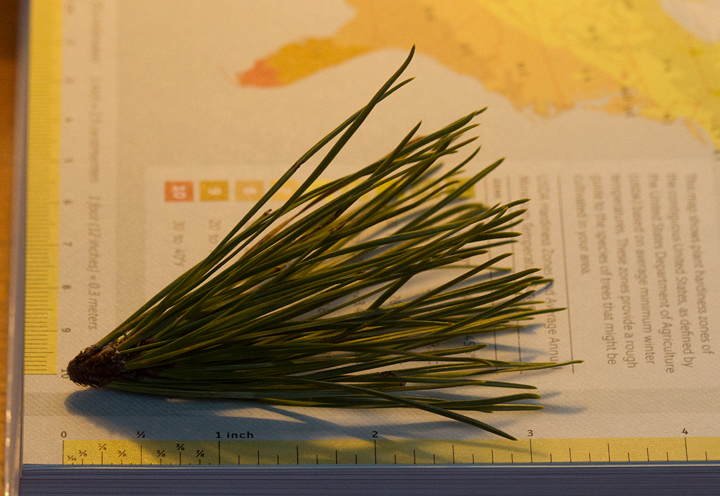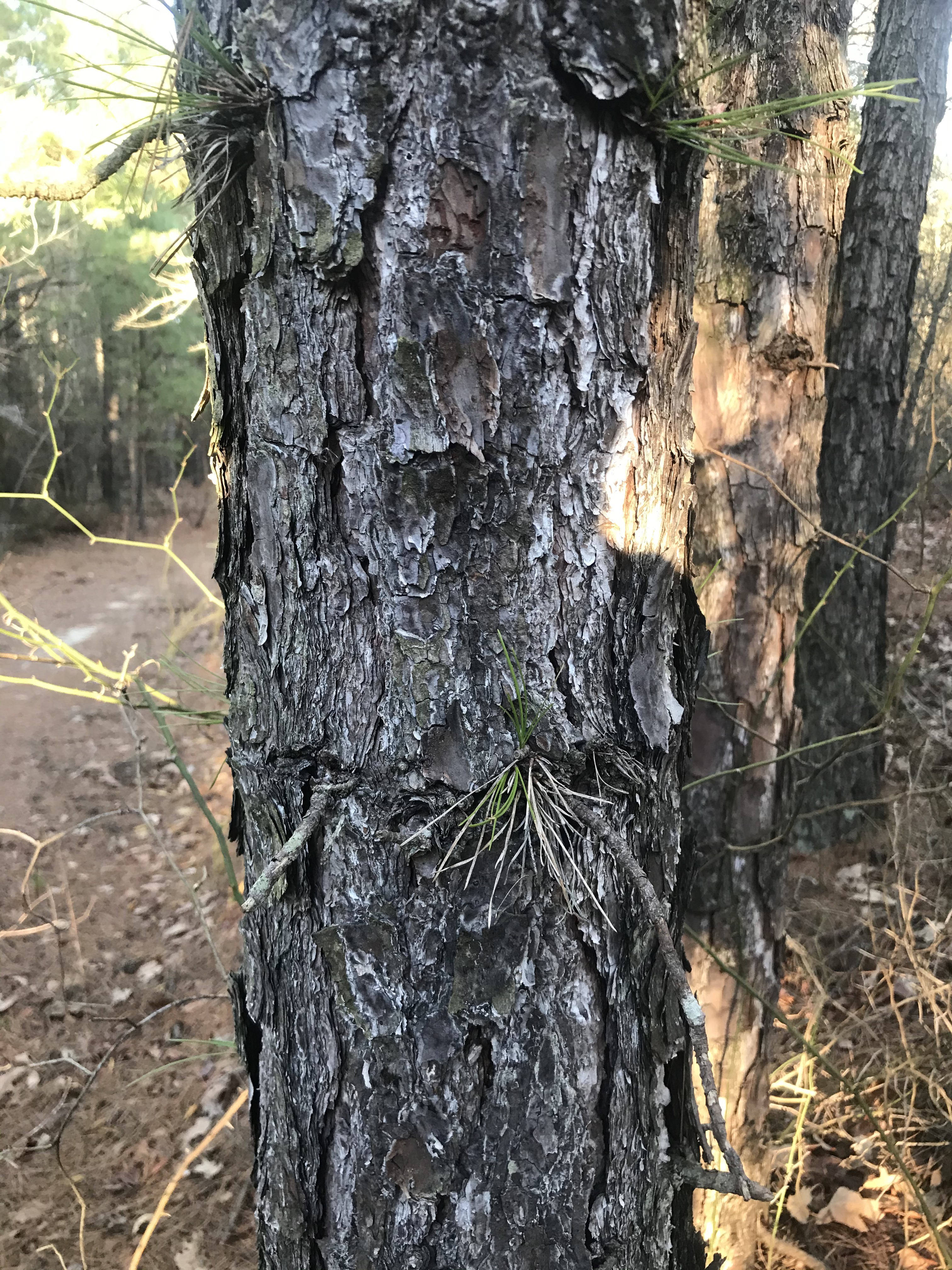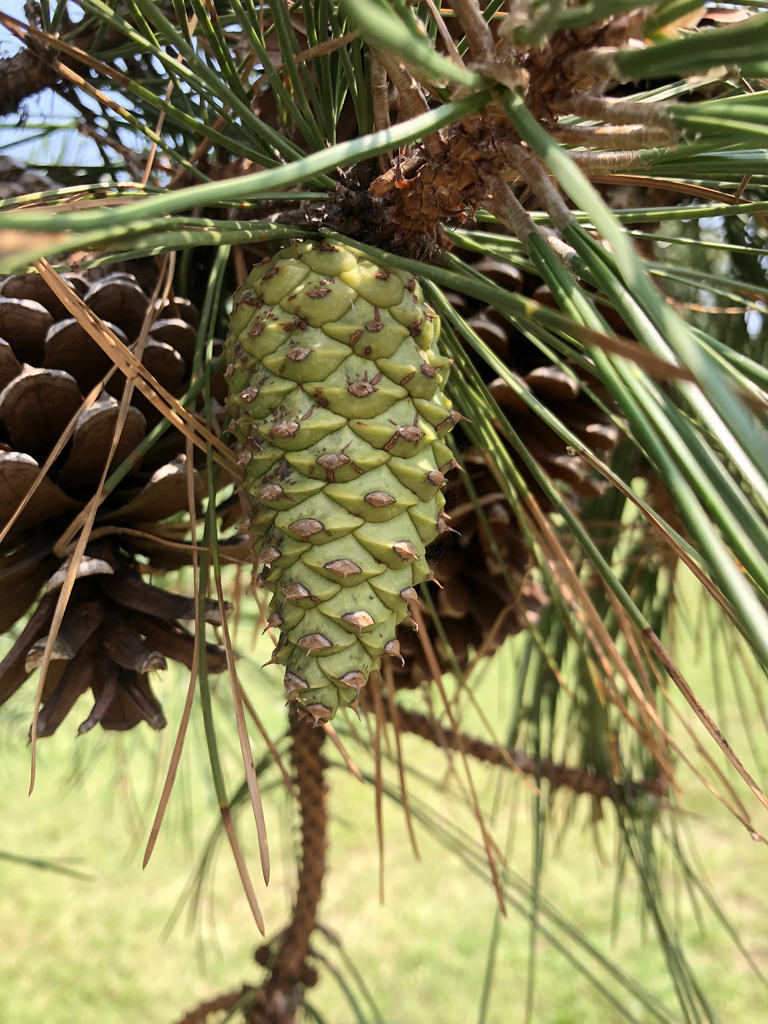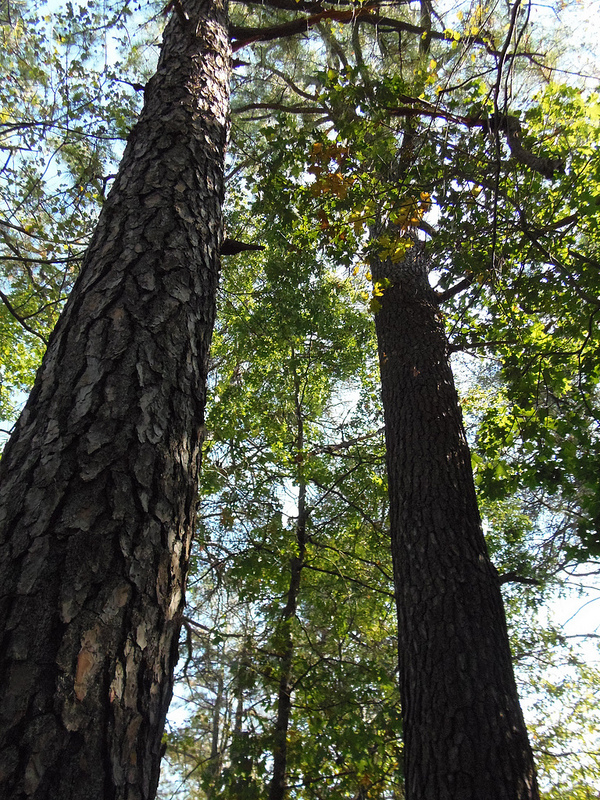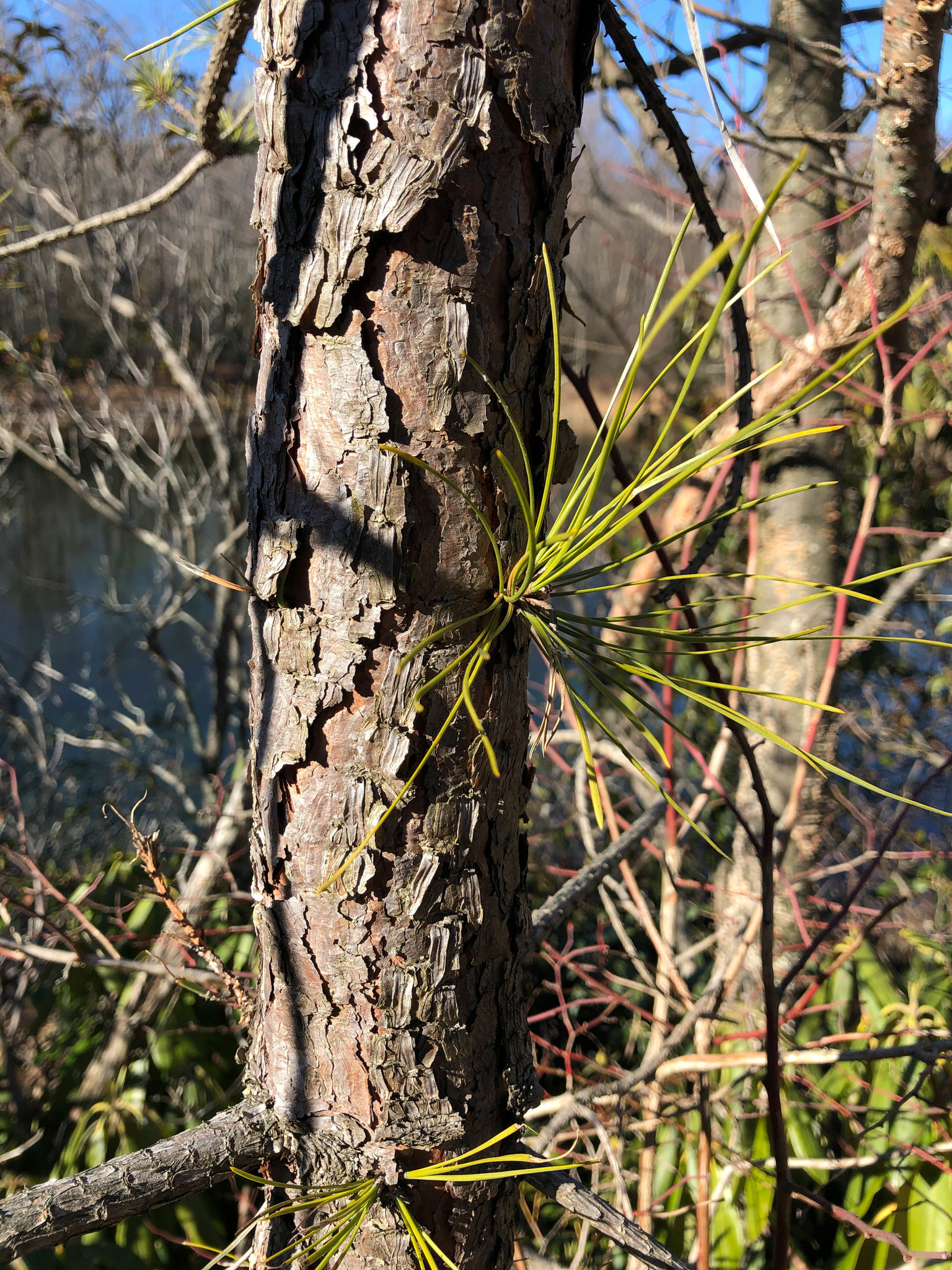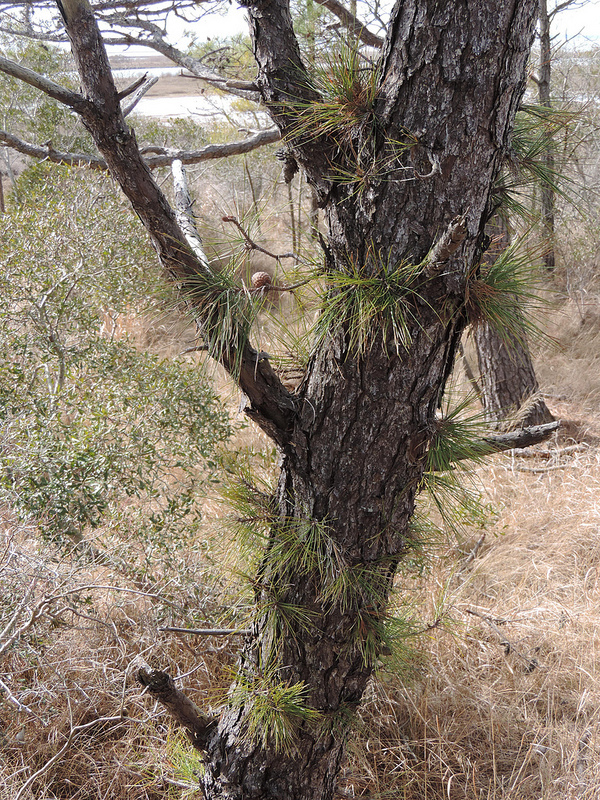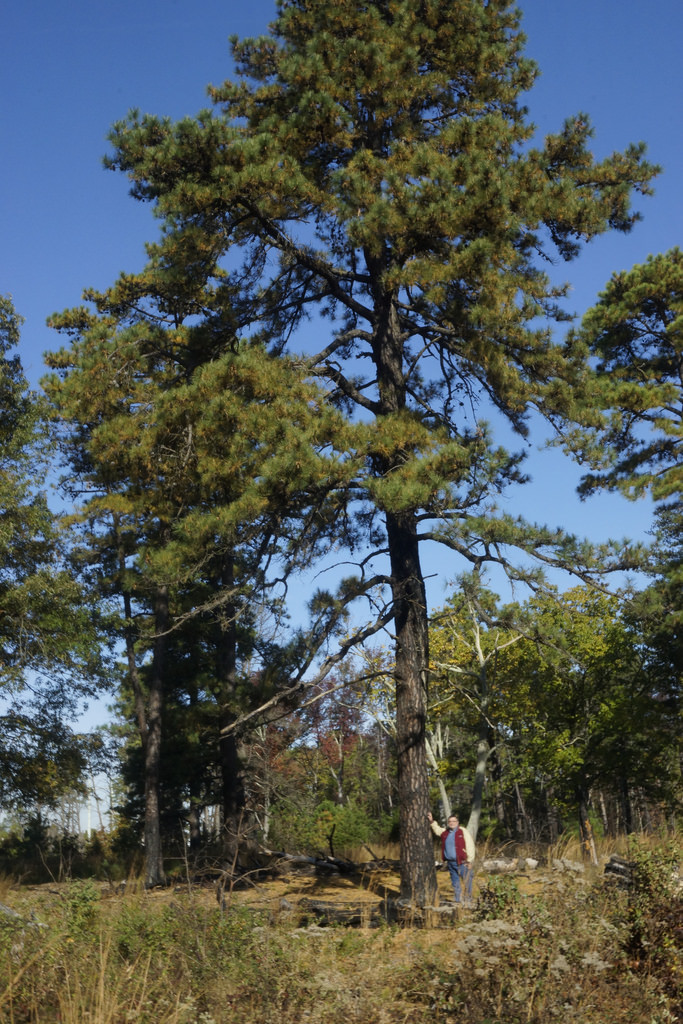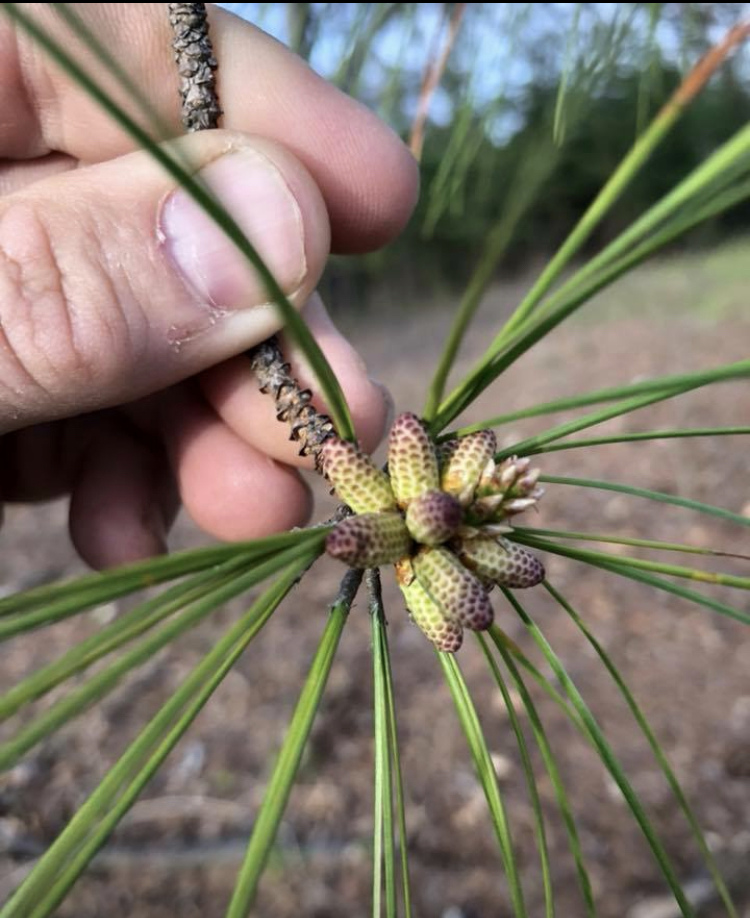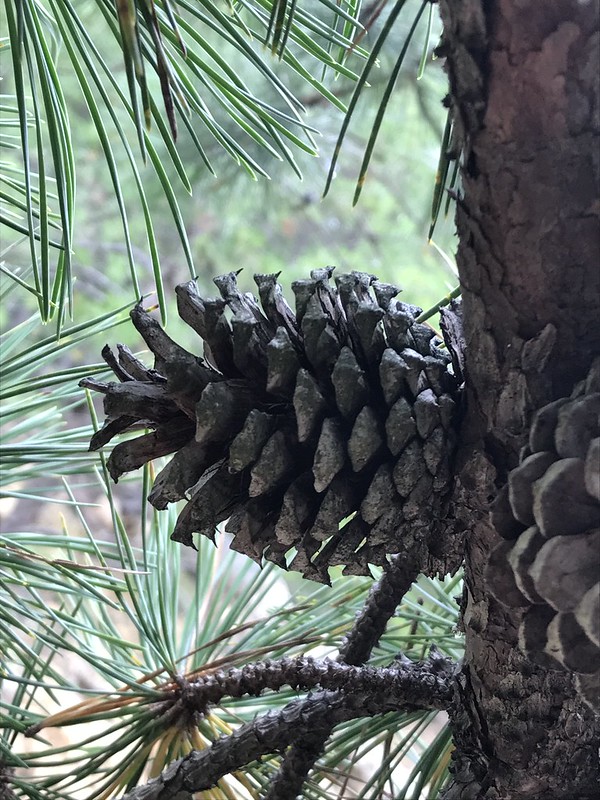



















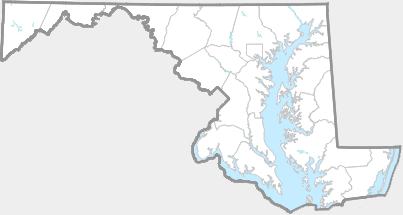
Pitch Pine occurs as a narrow band from southern Maine along the Atlantic coast southward to the mid-Atlantic, and from there south to Georgia as an inland band. Pitch Pine is the well-known pine barrens tree of New Jersey. "Pitch Pine as a dominant community component is highly rare in the greater Washington, D.C. area, reaching its southern coastal extension in the eastern U.S. on the vast, deep Cretaceous sand deposits that extend from northeastern Prince George's County through Anne Arundel County. All of the Pitch Pine communities in the region are allied with similar types in the New Jersey Pine Barrens and are globally rare" (R. Simmons, presentation). Pitch Pine "is locally abundant in a variety of habitats throughout [the Coastal Plain] region, from xeric to hydric, likely owing its presence and distribution more to the deep, sandy soils than the role of fire as a major developing factor. Innumerable old-age trees occur throughout...." (R. Simmons, et al., 2008).
Typical of Pitch Pine are tufts of needles emerging directly from the trunk and branches, but beware, Pond Pine also has needles that grow out of the trunk. Separating the two species can be difficult. Needles of Pitch Pine are typically 7-10cm long, while the needles of Pond Pine are typically 16-20 cm long. Pond Pine cones are serotinous. Pitch Pine produces both serotinous and non-serotinous cones.
There are easily observable stands of Pitch Pine along roads of the north tract of Patuxent Research Refuge in Prince George’s County. On the Eastern Shore, lone individuals occur in appropriate habitats (McAvoy, 2018), and notable populations are present in Idylwild WMA in Caroline County and in Pocomoke State Forest in Worcester County.
Pitch Pine is found across much of the state on dry, sandy, or rocky sites, often with Virginia Pine (Brown and Brown, 1972), and in bogs in Garrett County.
Host plant for various moth species including Rhyacionia aktita and Pitch Twig Moth (Gilligan, Wright, & Gibson, 2008).
There are 116 records in the project database.
| GA | AL | WA | FR | CL | MO | HO | BA | BC | HA | CE | PG | AA | CV | CH | SM | KE | QA | CN | TA | DO | WI | SO | WO |
